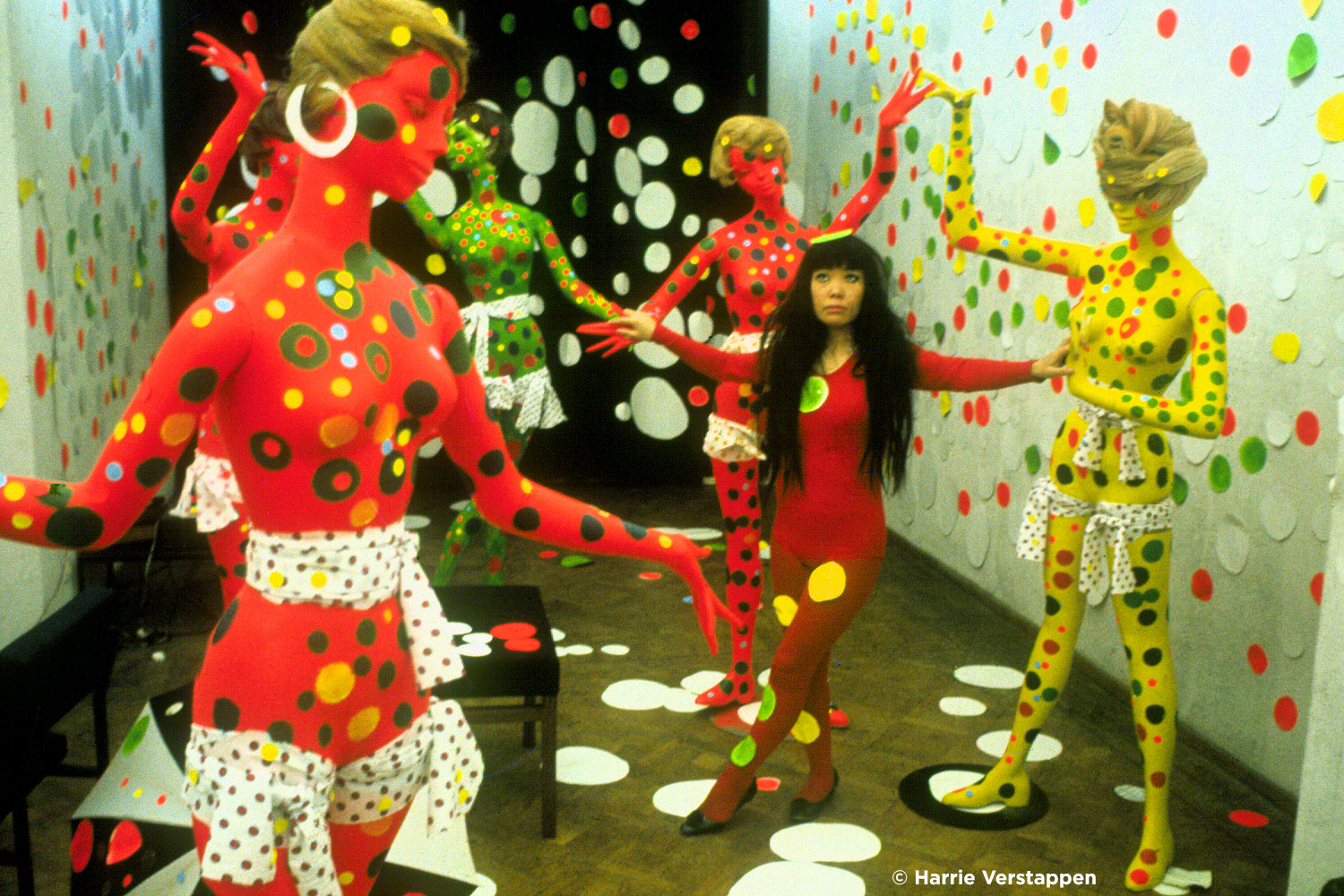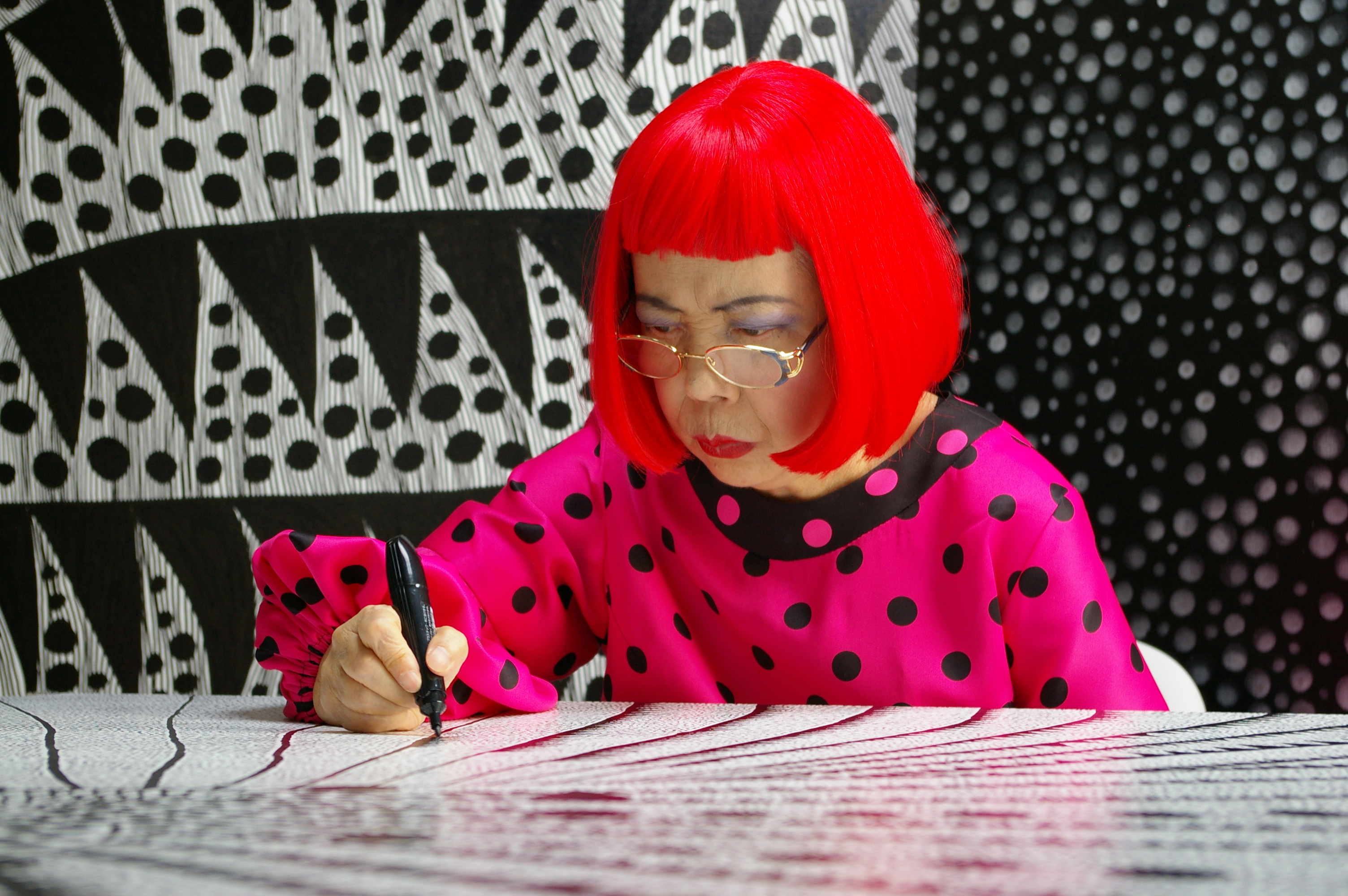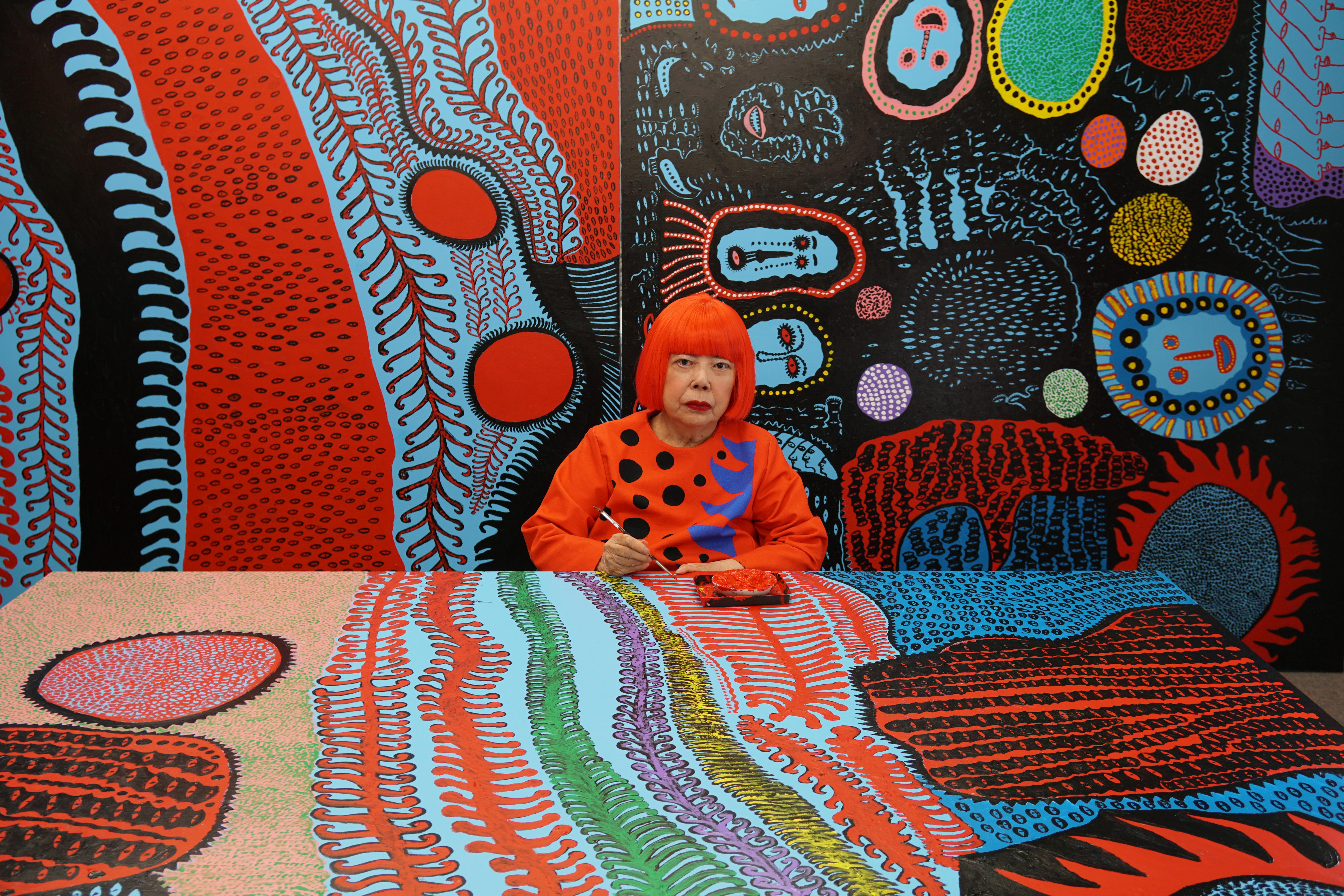
There is no living artist more enigmatic than Yayoi Kusama. Her name is currently more identifiable with the Instagram-famous “Infinity Room” installations and her candy colored wigs, but the Japanese artist started out as an abstract expressionist painter who meticulously painted dots, patterns and lines all over a canvas before working her way to making to her deliriously colorful pop art dot art works and performance art.
What makes Kusama so mysterious, however, is the intensity with which she presents her works, and the mental wellspring from where that intensity emerges. Factor in her lengthy internment into a psychiatric hospital for the last thirty years, and one begins to speculate that the artistic fervor she carries can also lead to mental instability (as it has been the common perception since the days of Van Gogh, no?). But filmmaker Heather Lenz’s documentary Kusama Infinity helps fill in the gaps of the artist’s background and life, as told to by Kusama herself as well as friends, art historians and curators who have helped uplift her art to make her the top-selling female artist in the world.
Born in 1929 in Matsumoto City, a rural provincial castle town in Japan, Kusama experienced familial trauma early on as a child from witnessing her parents’ contentious relationship due to her father’s philandering. Made to see her father’s affairs by her mother, young Yayoi developed a traumatic outlook towards sex that would follow her for the rest of her life. But art was a dynamic influence, despite her mother’s objections, and she soon learned to paint and draw quickly before her mother eventually snatched her paintings away.
To this day, Kusama paints her elaborate dots and lines in quick succession, improvising rapidly on the spot. “I come up with new ideas and my canvas cannot keep up with me,” Kusama says.

When it comes to women artists that have been marginalized in art history books, its often the case that many are just not as visible or welcomed as many as male artists. But the strange case with Kusama, as detailed in the film, is how actively ignored she was, despite good press and being popular. Kusama had an early warning of this when she wrote to American artist Georgia O’Keefe. O’Keefe let it be known that even as an older working artist, it was still hard to find acceptance in the art world. Despite this, Kusama moved to New York in the 1950s, finding relative success and being reviewed well in group art shows. Part of this was due to Kusama putting herself out there among art patrons and dressing up in traditional Japanese gowns to attract the attentions of male sponsors.
Racism, and sexism, however, play in to Kusama’s pain. It was often the case that many of her groundbreaking artworks were appropriated by white male artists like Andy Warhol, Lucas Zamoras and Claes Oldenburg. Oftentimes, Kusama’s works were included in group shows but relegated to a far corner of a gallery.
By the mid ‘60s, Kusama started exhibiting more in Europe, and that’s where her art really started to explode. So did her own visibility as a performance artist. As Americans were expanding their consciousness with mind altering drugs, Kusama’s mind was already one with the universe with her trippy, psychedelic paintings and large scale installations.
Radically challenging multiple status quo with her performance art and art happenings, Kusama hosted live paintings of nude women in the sculpture garden of the Museum of Modern Art to protest their low number of women artists (she argued, the only way women were seen were in nude paintings— preceding the Guerrilla Girls by a couple decades!). Kusama also threw gay weddings, staged anti war happenings and started to explore experimental film. While the counter culture loved her, her publicity was not well received in her native Japan, bringing shame to her family and hometown. Even worse, while Kusama was popular among the counterculture, she wasn’t any more respected by the art world. Depressed and disillusioned by the lack of support, Kusama traveled back to Tokyo in 1973 to start her art practice from scratch, to be rediscovered and reevaluated in 1989.

Lenz’s documentary is a comprehensive primer into the life of Kusama, and luckily Kusama is present and able to tell much of her own story herself. While the darker parts of her life like her trauma, suicide attempts, marginalization and mental health are affecting, Lenz makes it known that there is something inherently survivalist about Kusama that makes her story a hopeful one.
One such case is her description of how she feels safe in her artwork. Kusama hints at a deeply buried, painful event in her life in a rural flower field, where she felt instantly safe surrounded by the beauty of flowers. Her obsessive nature of recreating the feeling of being lost in her physical environment that is rapidly expanding is Kusama’s way of feeling safe again from her pain.
As we know how Kusama’s story eventually turns out, Kusama Infinity very vividly explains how her life and fragile mental state have played a huge role in her artwork, and more importantly, celebrates her as an artistic genius. It will be hard for anyone not to be a fan of her work after experiencing it.
Kusama Infinity opens nationwide today, but seek out a screening at Regency South Coast Village tonight and tomorrow night at 7 p.m. and Sunday 9/16 at 4:30 p.m., when the director will be present for Q&A sessions with the audience.
Aimee Murillo is calendar editor and frequently covers film and previously contributed to the OCW’s long-running fashion column, Trendzilla. Don’t ask her what her favorite movie is unless you want to hear her lengthy defense of Showgirls.


I’m in dote on with the cbd products and https://organicbodyessentials.com/products/cbd-oil-for-sleep ! The serum gave my skin a youthful help, and the lip balm kept my lips hydrated all day. Eloquent I’m using moral, bona fide products makes me feel great. These are now my must-haves for a fresh and nourished look!